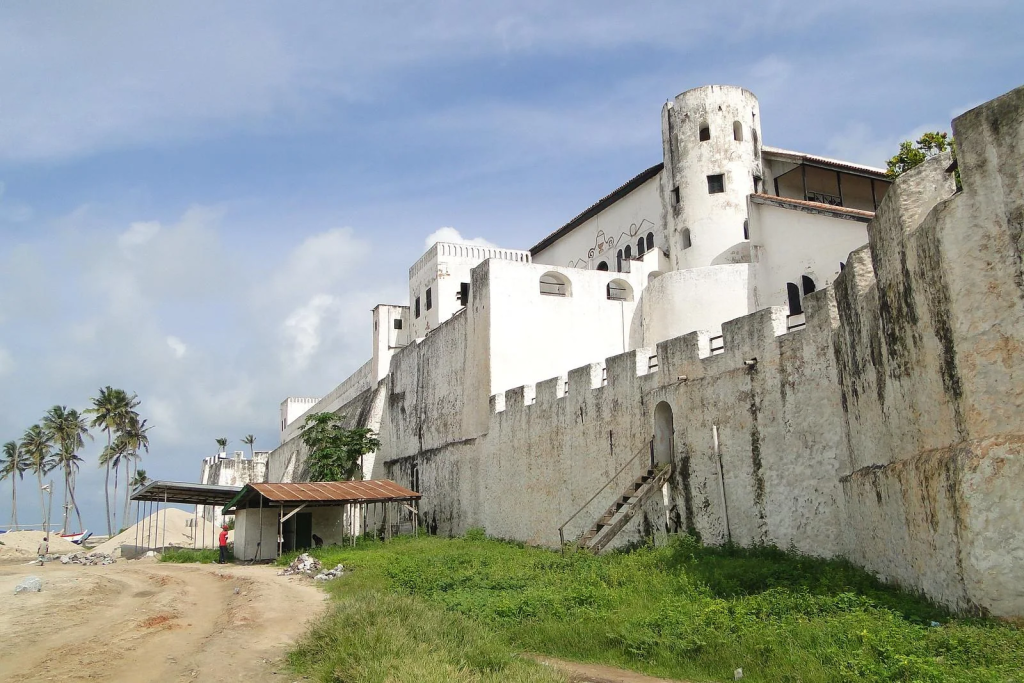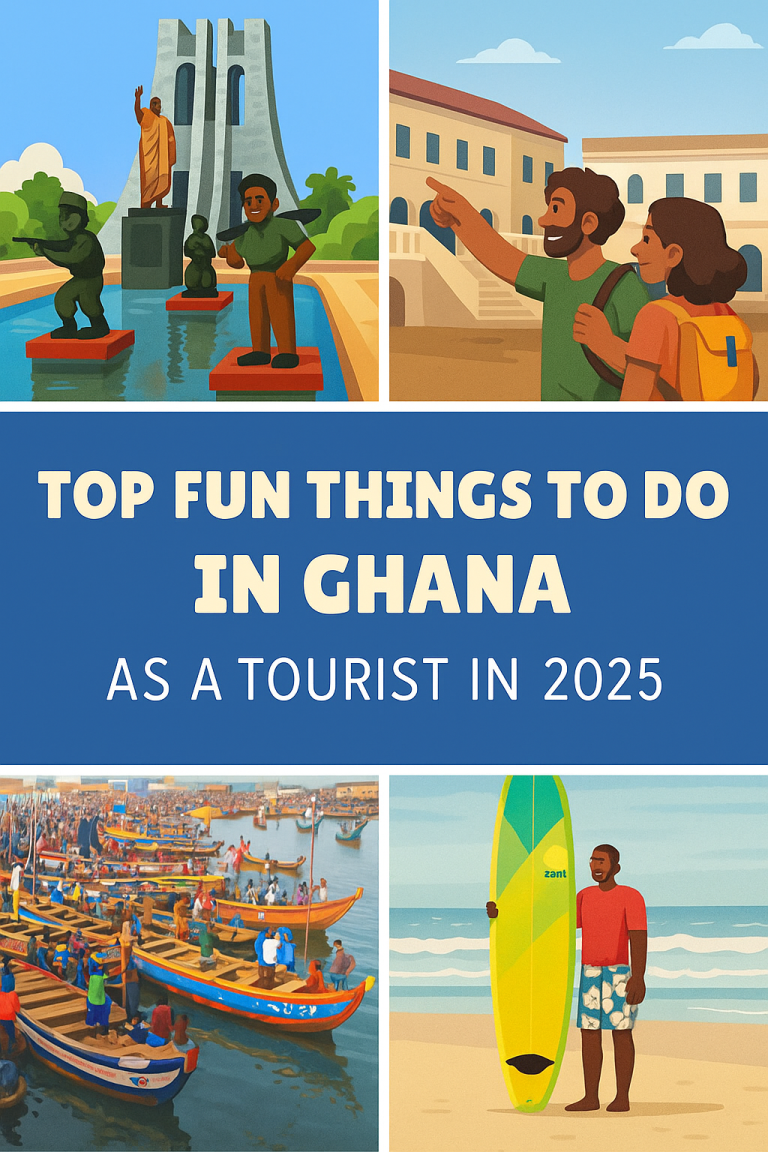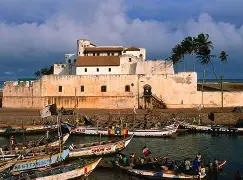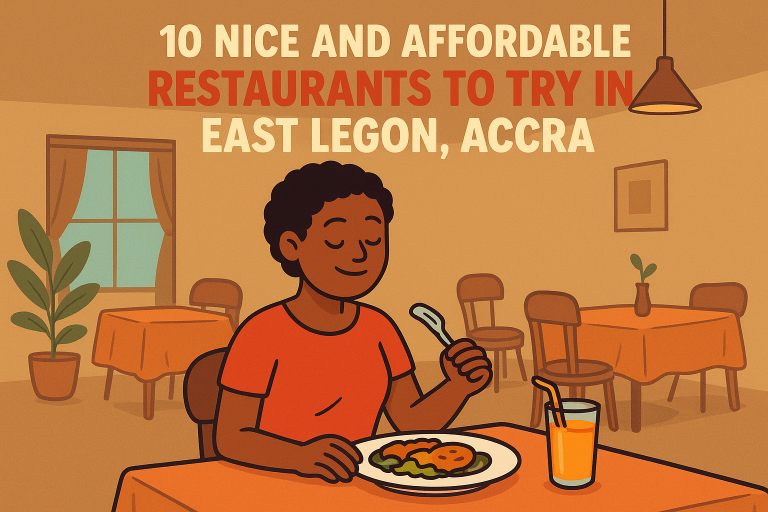Top 10 Historical Sites in Ghana Every Tourist Must Visit
There are several historical sites in Ghana, places that every tourist must visit. These historical sites chronicles the country’s journey across centuries, from pre-colonial kingdoms and the trans-Atlantic slave trade to independence and modern cultural heritage. These places are not only educational and moving, they’re essential stops for any tourist who wants to understand the heart and soul of Ghana. Below is a list of the top 10 historical sites in Ghana, with each site’s significance, what you can see, and why you should visit.
1. Cape Coast Castle — Central Region

One of the most well-known historical sites in Ghana, Cape Coast Castle is a UNESCO World Heritage site. Built by European colonial powers (first by the Swedish, later taken over by the British), it was a major holding point during the transatlantic slave trade. Visitors can tour its dungeons, colonial-era architecture, the “Door of No Return,” and a museum that tells the story of thousands of Africans who passed through.
2. Elmina Castle — Central Region

Built by the Portuguese in 1482, Elmina Castle is the oldest European structure south of the Sahara. It played a pivotal role in gold trading, later becoming central in the slave trade era under various colonial powers. The site features ramparts, prison cells, a courtyard, and ocean-facing views. It offers a sobering, yet powerful, perspective on colonial history and human resilience.
3. Kwame Nkrumah Mausoleum & Memorial Park — Accra, Greater Accra Region

This site commemorates Ghana’s first president, Dr. Kwame Nkrumah, a key figure in Ghana’s independence in 1957. Located in Accra, on the old British polo grounds, the mausoleum and memorial park include a museum with artifacts from his life, a statue, and beautifully landscaped grounds. It’s great for learning about Ghana’s road to self-governance.
4. Assin Manso Slave River Site — Central Region
Assin Manso is known as the place where enslaved Africans had their final bath before being marched to the coast for shipment. There is a memorial, slave graveyards, and educational installations. It’s a deeply emotional historical site that emphasizes the human cost of slavery and is very meaningful for visitors who want a deeper understanding of Ghana’s history.
5. Larabanga Mosque — Northern / Savannah Region

A striking example of Sudano-Sahelian architecture, the Larabanga Mosque is said to have been built in the 15th century. It is one of the oldest mosques in Ghana and remains a place of active worship. Tourists are drawn by its unique architectural style, the local legends surrounding its founding, and its significance as a living monument.
6. Salaga Slave Market and Heritage Site — Savannah Region
Salaga was a major slave market in Northern / Savannah Ghana. Today, the remains of the market, including wells, old paths, and heritage markers, offer a look into a painful past. Visiting Salaga gives insight into internal African slave routes as well as the broader trans-Atlantic story.
7. Manhyia Palace Museum — Kumasi, Ashanti Region

The Ashanti Kingdom played a central role in Ghana’s pre-colonial history. The Manhyia Palace Museum in Kumasi, seat of the Asantehene (the Ashanti King), displays royal artifacts, regalia, and exhibits on Ashanti leadership, warfare, culture, and the interaction with colonial powers. It’s a key example of how traditional authority and heritage remain alive in modern Ghana.
8. Forts and Castles along the Ghanaian Coast — Western, Central, Eastern, Greater Accra Regions

This is a collective heritage category including Elmina Castle, Cape Coast Castle, Fort William Lighthouse, Fort St. Jago, Ussher Fort, Christiansborg Castle (Osu Castle), Fort Orange, and others. These forts and castles served as trading posts, slave holding areas, administrative centers for colonial powers, and are UNESCO World Heritage sites. Together they represent over 500 km of coastline history.
9. Wa Naa’s Palace — Upper West Region

The traditional palace of the Wa Naa in the Upper West Region is a well-preserved example of local architecture and royal tradition. Built around the 19th century in mud-brick (Sudano style), it has served as a center for governance, culture, and rituals among the Wala people. Visitors can see royal artifacts, learn about local customs, and appreciate traditional building styles.
10. Pikworo Slave Camp (Paga Nania) — Upper East Region
Located in the northernmost parts of Ghana, this slave camp was part of the slave trade network. It features mass holding grounds, auction sites, watch towers, and other remnants. The Pikworo site is remote, educational, and powerful: it tells the story of forced migration, human suffering, and endurance.
Why Historical Sites in Ghana Are Important
- They preserve memory and identity: historical sites in Ghana hold stories of kingdoms, colonialism, slavery, and independence that help Ghanaians and visitors understand the nation’s identity.
- Educational value: For students, scholars, and curious travelers, these places offer real settings for learning about Ghana’s past.
- Cultural tourism: These sites attract visitors from around the world, boosting local economies and bringing awareness to Ghanaian heritage.
- Healing and remembrance: Especially sites related to slavery (Cape Coast, Elmina, Assin Manso, Pikworo) are spaces for reflection, reconciliation, and honoring those who suffered.
Examples & Names of Historical Sites in Ghana
- Five historical sites in Ghana: Cape Coast Castle, Elmina Castle, Larabanga Mosque, Kwame Nkrumah Mausoleum, Manhyia Palace Museum.
- Name three historical sites in Ghana: Salaga Slave Market, Pikworo Slave Camp, Christiansborg Castle.
Conclusion
These top 10 historical sites in Ghana every tourist must visit offer powerful windows into the past from royal palaces and sacred mosques to fortresses that bore witness to trade, colonialism, and the trans-Atlantic slave trade. They are landmarks that educate, move, and inspire.
If your content or travel plan needs to truly showcase Ghana’s heritage, Crescita Solutions can help you share these stories with authenticity and depth. Let us help your audience connect with Ghana’s history beautifully, respectfully, and memorably.






